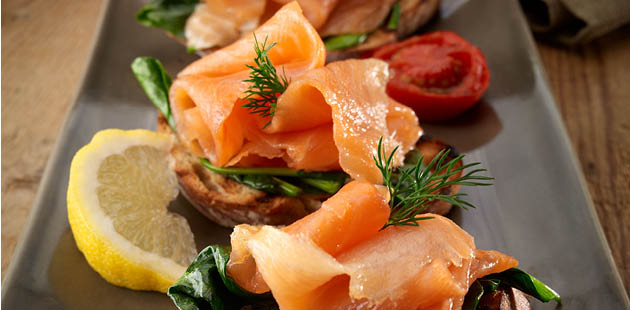Planning the perfect Christmas menu
The evenings will soon be drawing in – it’s time to start planning your festive menus

From Burn’s night to Easter, occasions are often a chance to bring residents together, plan activities and theme your menus. And there are few more exciting for most than Christmas. “The mince pies come out on 1st December and they are out all month,” agrees Chris Bonner, development chef at HC-One. “It’s an exciting time, with everywhere fully decorated.” The provider started its festive planning last month, with a development day seeking chefs’ input into what makes the cut.
“Christmas is a real highlight for us within our care homes,” agrees Felicity Townsend, White Oaks account manager at Compass Group UK and Ireland, adding: “Food brings people together, evokes memories and I feel the meals we provide play a vital role in residents’ care, contributing to more general good health and morale. This is important all year round, but Christmas brings a true sense of occasion and celebration into our care homes.”
The classics
You might be keen to introduce new flavours and concepts to your menus, but for most residents tradition is likely to win out at Christmas. “We offer a traditional three-course lunch for Christmas day, including a turkey roast dinner. We champion local and seasonal ingredients with all the trimmings, crisp roasties, flavoured mash and melange of root and brassica vegetables,” Townsend says, adding: “The residents like to enjoy the old favourites at Christmas time but we also add some of the newer additions to festivities such as Christmas stollen and Panettone.”
Bonner agrees that tradition is the main driver of HC-One’s menus at Christmas. “On Christmas Eve we will have a big buffet where residents’ families come in, and we’ll have champagne, Bucks Fizz and blinis,” he says. “On Christmas morning, home managers will often wake residents up with a glass of Bucks Fizz and a present. While we like chefs to have autonomy, our breakfast menus tend to be a lighter option, such as smoked salmon and scrambled eggs or a bacon sandwich.”
For the main event, there are two starters on offer – usually a soup of the day and a fish option, depending on what has been served at breakfast – followed by a Christmas dinner with all the trimmings (as well as a vegetarian option) and a choice of two desserts.

The Menuserve Prosecco and strawberry roulade
“It’s always a great day – when I was a head chef I used to always work Christmases to make sure everything was perfect, and our chefs feel the same,” Bonner says.
Getting ahead
Let’s go back a step. You know what a successful Christmas Day looks like, but we’re aware there is plenty to tackle before it becomes a reality. Chefs will still have the usual dietary requirements and health conditions to consider, so giving yourself enough time to prepare menus for all residents is essential.
Townsend says planning begins a few months ahead, with chefs pre-ordering items that will last to take pressure off on the day itself. “The build up to Christmas is half the fun and if we can get the residents involved with stirring the Christmas pudding mixture while they make a wish, so much the better,” she says.
Organising your menus with time to spare will be particularly helpful when supply chains are unpredictable. “Plan your Christmas menu early and keep it as simple as possible to ensure food can be made and delivered quickly and easily to residents and guests,” agrees Joel Carr, development chef at Young’s Foodservice. “Frozen fish is a great option for a busy kitchen. It can be kept in the freezer and simply defrosted as needed, which helps to reduce waste as well as the potential for out of stocks. Smoked salmon is a great option for a festive menu.”
Preparing a back-up option for residents who don’t want to – or can’t – have your full menu will save you time if plans change on the day. Scott Oakes, commercial manager for Baker Street, part of the St Pierre Groupe, says: “Christmas is a busy period in any catering environment and if there’s any opportunity to save time, caterers should grab it. In health and care environments, for example, not every user might want a full roast Christmas dinner and with strict nutritional plans in place, it might not meet the needs of all residents too.”
For a simple alternative which doesn’t create more work for the kitchen, Oakes suggests trying Christmas sandwiches, which are simple for staff to prepare and can be a lighter option.
To save time, he advises using products which simplify other courses – such as a fruit flan case for dessert. “Cooking three courses in a public sector environment is a challenging task and you only have to watch the popular bakery shows on TV to see that there is no shame in cutting corners with pre-baked products,” he says. “Even more so when you can still add ingredients to create a ‘home-made’ showstopper.”

Smoked salmon from Young's Foodservice
On ice
Turning to frozen products can ease pressure and allow you to introduce options which might be too time-consuming to prepare fresh on the day. Gordon Lauder, managing director at Central Foods, says: “Frozen desserts are a bonus in any care home kitchen at Christmas, as they help to reduce unnecessary waste – just defrost what’s needed. They also free up staff to prepare and serve other parts of the festive meal. Choose options that look stunning and taste amazing. It’s all about decadence at Christmas. Ring the changes by adding alternatives to Christmas pudding – it’s good to offer choices.”
Lauder points to Menuserve’s squidgy chocolate roll as an indulgent treat, and its strawberry and Prosecco meringue roulade as a lighter option, which is sprinkled with dried raspberry pieces to provide a festive look.
“Frozen food offers the ultimate in convenience, especially for products that are challenging or fiddly to make,” agrees Marie-Emmanuelle Chessé, international development project manager at Tipiak. “Care home caterers could make life easier by using frozen pâtisserie this Christmas. Pâtisserie is a popular hors d’oeuvre item on menus and a key ingredient of any festive afternoon tea in particular, but it requires the skill of a specialist pâtissier, which many care home kitchens don’t have. Using frozen pâtisserie means that care home caterers can easily serve their residents ‘thaw and serve’ canapés or sweet treats.”
Christmas may still feel a way off, but by planning now you will minimise your stress on the day and guarantee you have a home full of happy residents. Balance tradition with creative flair and ensure dietary needs are met to create a truly special Christmas.











